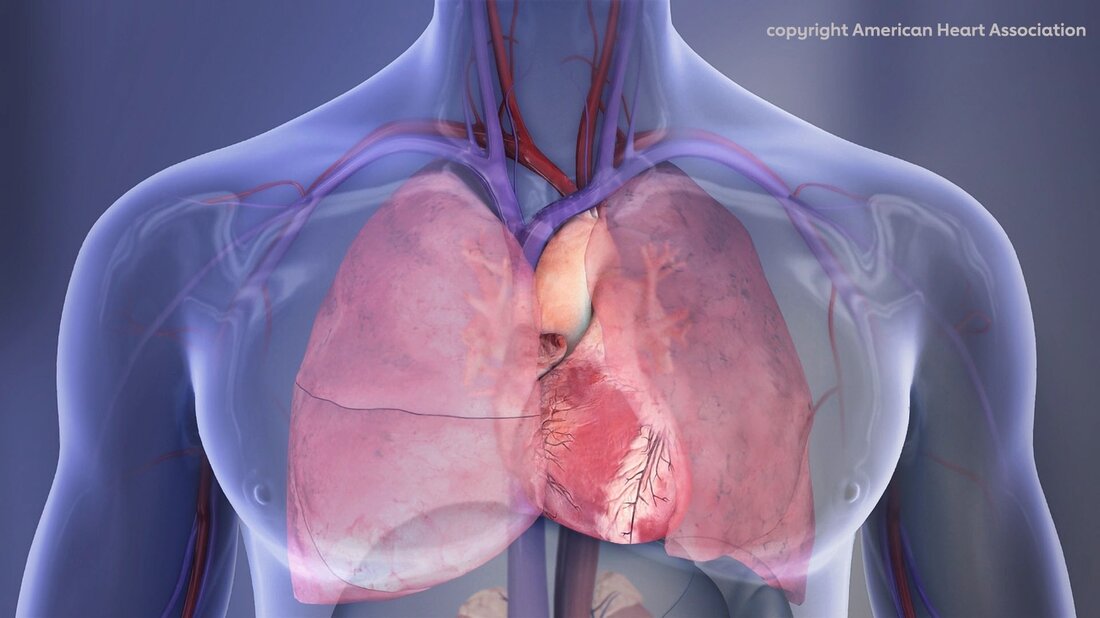First heart transplant from pig to human changes the heart's electrical signals
*Important Note: Statements and conclusions of studies presented at American Heart Association scientific meetings are solely those of the study authors and do not necessarily reflect the policy or position of the Association. The Association makes no representations or warranties as to its accuracy or reliability. Abstracts presented at the Association's scientific meetings are not peer-reviewed but are curated by independent review panels and considered on the basis of their potential to expand the diversity of scientific topics and views discussed at the meeting. The results are considered preliminary until they are submitted as a full manuscript in a peer-reviewed...

First heart transplant from pig to human changes the heart's electrical signals
*Important NOTE:Statements and conclusions of studies presented at American Heart Association scientific meetings are solely those of the study authors and do not necessarily reflect the policy or position of the Association. The Association makes no representations or warranties as to its accuracy or reliability. Abstracts presented at the Association's scientific meetings are not peer-reviewed but are curated by independent review panels and considered on the basis of their potential to expand the diversity of scientific topics and views discussed at the meeting. Results are considered preliminary until published as a full manuscript in a peer-reviewed scientific journal.
A current study to be presented at the American Heart Association (AHA) Scientific Sessions 2022 * revealed unexpected changes in the electrical conduction system of the first genetically modified pig-to-human xenograft.
Xenotransplantation is the process of transplantation/implantation of organs from non-human animal sources into a human. The first pig-to-human heart xenograft was transplanted in January 2022 at the University of Maryland. The recipient survived 61 days after receiving the xenograft. Research efforts on this xenotransplantation have been ongoing for over three decades.
If successful, the harvest of genetically modified pig hearts, whose genes have been altered for safe transplantation into humans, would become a reality. However, xenotransplantation of organs into a human presents several inherent challenges. With these transplant procedures there is always the risk of transplant rejection, infection and cardiac arrhythmias.

The study and results
In the present study, researchers performed a 12-lead electrocardiogram (ECG) during the postoperative period of the patient who underwent the first porcine-to-human heart transplant. ECG data were obtained every day after xenotransplantation. Researchers reviewed the following ECG measures: PR interval, QRS complex, and QT interval.
The ECG parameters of the “accepted pig heart transplant in the ‘pig body’” show short PR (50 to 10 milliseconds, ms) and QT (260 to 380 ms) intervals and short QRS (70 to 90 ms). However, the first ECG of the porcine-to-human foreign heart transplant showed a relatively longer PR interval of 190 ms, a QT interval of 538 ms, and a QRS duration of 138 ms.
Prolonged intrinsic PR intervals were stable at 210 ms in the postoperative period. On day 12 after transplantation (PR interval: 380 ms), there was evidence of a decremental delay in intra-atrial conduction. The QRS duration was prolonged but shortened in the postoperative course. High QT intervals (509 ms) persisted with dynamic fluctuations, with the lowest (428 ms) occurring on day 14 after transplantation.
Conclusions
The ECG of the pig-to-human xenograft showed a prolongation of the typical ECG measures in the donor, which included changes in depolarization and repolarization. It was a new finding that the human porcine heart showed different ECG parameters compared to the commonly observed findings for native porcine hearts.
The prolonged ECG parameters persisted and showed dynamic changes in the postoperative period. These are the first insights into the emerging novel field of xenografts, highlighting the complex interplay of porcine denervation and interspecies physiology in addition to the postoperative and drug-associated changes.
*Important NOTE:Statements and conclusions of studies presented at American Heart Association scientific meetings are solely those of the study authors and do not necessarily reflect the policy or position of the Association. The Association makes no representations or warranties as to its accuracy or reliability. Abstracts presented at the Association's scientific meetings are not peer-reviewed but are curated by independent review panels and considered on the basis of their potential to expand the diversity of scientific topics and views discussed at the meeting. Results are considered preliminary until published as a full manuscript in a peer-reviewed scientific journal.
Reference:
- Vorläufiger wissenschaftlicher Bericht.
Aussehen und Entwicklung von EKG-Ausgangswerten in der weltweit ersten genetisch veränderten Xenotransplantation vom Schwein zum Menschen („Schweineherz im menschlichen Körper“), Calvin Kagan, Richard Sandeep Amara Muhammad Haq, Muhammad Mohiuddin, Susie N Hong-Zohlman , Manjula Ananthram, Charles C. Hong, Vincent Y. See, Stephen Shorofsky, Bartley Griffith, Timm Dickfeld, https://www.abstractsonline.com/pp8/?_ga=2.88375449.302185636.1662665149-988796826.1632509470#!/10611/presentation/10982
.

 Suche
Suche
 Mein Konto
Mein Konto
